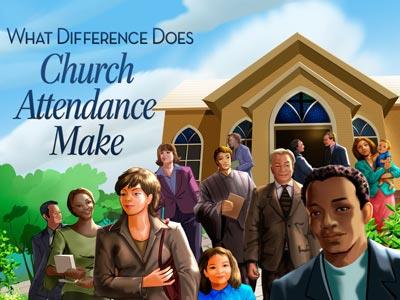-
The Hope Of The Resurrection In The Church
Contributed by Michael Hollinger on Nov 28, 2017 (message contributor)
Summary: **Church History / Church Trimuphant ** For the community sunrise service I was asked to speak on the hope of the resurrection specifically in the church
You don’t have Easter without Good Friday. You don’t have the hope without the despair. But God be praised, because of the Resurrection, we don’t have despair without hope. Every Good Friday has an Easter.
Larry has asked me to say a few words about how the hope of Easter works in our church and community. From my vantage point, it’s probably a lot easier to see Good Friday. It’s not unique to pastors. I’m sure we all we remember the glory days of Pastor Remember-When. We all know the pews were fuller years ago. It seems like all our churches are dying. And you know what? They’re right.
Churches are dying. Churches are made of people who are dying. In our congregation, we’ve lost loved ones this year. Even this week, people I love have been very near death. And these people can never be replaced, even if someone else sits in their seat and does their job. We all have our Good Fridays. We all die. Even Christ died.
But the hope of the Resurrection is that just as Christ’s physical body stood up again, so too his bride – the church – the thing we call the body of Christ will rise up like it did in the past.
In the blood of the martyrs, a church took seed and grew to challenge an empire. Pretty good for a rag tag bunch of fisherman that were supposed to have died out with the death of their Rabbi.
In Japan, the Shoguns thought they would kill off the church by making it illegal in their Empire. And yet, two hundred years later, when the Shogun ended, it was found out there were still ‘Karuke Khirishitan” Hidden Christians who still prayed the Lord’s Prayer.
In translating its Scriptures, the Church has not only documented more languages than anyone thought existed, it has produced the first written systems for many of them. To the American eye, modern atheistic humanism is written in Russian script. And yet that language is written in characters introduced by St. Cyril in order that first they might have had a Bible. And now, we see that church acknowledged as Russia’s hope for the future.
Even in the Middle East, where Christianity was wiped out by Islam, there are seeds of house church popping up all over the land. Everywhere this church was supposed to have died, Jesus seems to say, “Not yet! Not Yet!”
And yet, here in America we still see our empty pews. We wonder. We look out from the altar and we ask: Can this too live?
The story is told of Thomas Aquinas walking the hallowed streets of Rome nearly a thousand years ago. As he and his compatriot admired the glorious statues and buildings, it must have seemed like a Friday. The friend said to Aquinas, “Our church can certainly no longer say, ‘Silver and gold have I none,’” To this Aquinas said, “‘Yes, but neither can she say in the name of Jesus Christ, rise up and walk!”
In the midst of great prosperity, Aquinas could view his own church as dying. That is the threat we see. It can be death sentence no less than fiery arrow or piercing sword. We fear spiritual famine in the midst of plenty, death by drought even as we drown in doleful blessing.
Aquinas’ church suffered from the same prosperity that paralyzes us today. But in the fires of Reformations, two great churches have emerged from one that both acknowledge was dying. By the power of the Holy Spirit, that same church launched a scientific revolution of Enlightenment, explored the world in the name of Jesus, and abolished slavery.
The Church rises and falls over the ages. It is forever set between these pillars of life and death. And yet we ask: Can this too live?
Like Aquinas, Ezekiel looked out over a valley of dry bones. It must have been a Friday.
But the God of the Resurrection asked him, “Son of Man, Can these bones live?” Ahead of his time he spoke the only answer that makes any sense. “Only you know, O Lord. Only you can know.”
It says that one by one those bones came to together, fastening bone upon bone, joint upon joint, muscle upon muscle. God himself can bring life to whatever he chooses. He has in the past, and by God’s grace I pray for this community that he will again. As Christ’s body, it is both our heritage to be resurrected and our privilege share in that resurrection. He’s done it before. He’s worked with less. If we can choose to let him be God, by God he’ll revive us again.
After all, for 2000 years, every Good Friday has been followed by Easter.

 Sermon Central
Sermon Central



